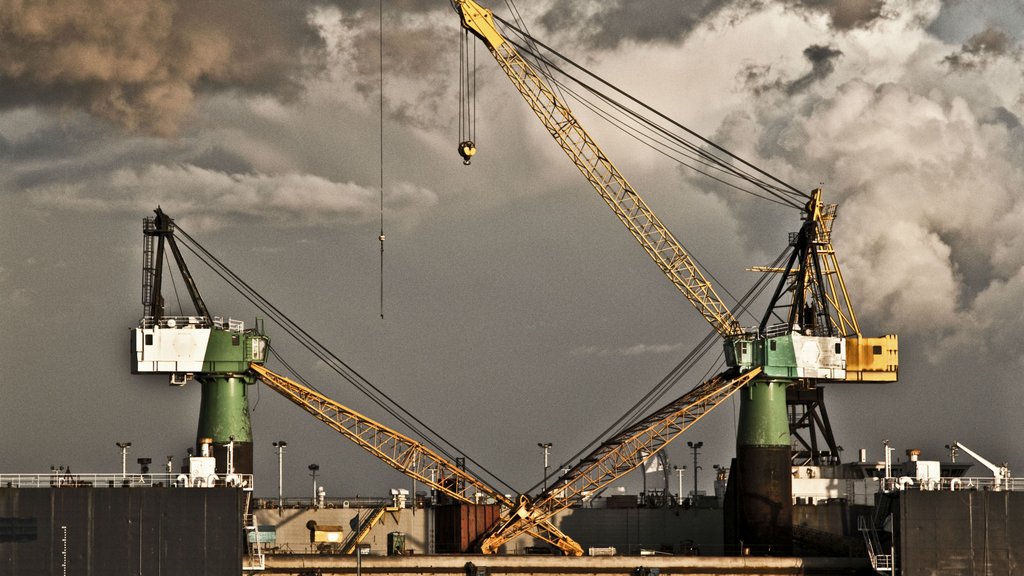Research - 22.01.2019 - 00:00
Will China fall into the Middle-Income Trap?
China’s economic growth dropped to its lowest annual rate in 28 years. Is this the result of the looming trade war with the US, a sign of deeper trouble in China, or does it show a natural maturing of the Chinese economy? By Stefan Legge.

22 January 2019. Given the smoothness of China’s official growth figures many Western observers doubt their credibility. At 6.6 percent the growth rate would still be high, yet other measures of economic development point to a markable slowdown. The year 2019 has just started and already companies from Apple and Samsung to Jaguar Land Rover have pointed to slower business in China. While being the world’s biggest automotive market, car sales in China fell last year for the first time since 1991. Furthermore, manufacturing output contracted in December. Whether we concern ourselves with China’s real estate market, consumer sentiment, retail sales, fixed asset investment or foreign investment – we have discovered negative signs everywhere in recent months. China’s benchmark stock market indices sum up the mood by being the worst performing of any major economy last year, losing about a quarter of their value.
All this points to the conclusion that China’s economy indeed faces a substantial slowdown. Yet, projections of China's imminent growth reduction have a long history. As long ago as in 1990, The Economist wrote that China's economy has come to a halt. It has not. But will its growth rate continue to decrease to substantially lower levels?
For decades the Chinese economy has shown robust growth, ratcheting up the average income from below $200 in 1980 to about $9000 in 2018. Following the World Bank’s definition, China is now an upper middle-income economy. This is tricky territory when looking at historical data. An extensive analysis in 2012 by Agénor, Canuto, and Jelenic finds that a significant number of countries reached middle-income status in the years following 1950. Yet, very few have made the additional leap needed to become high-income economies. Many countries got stuck in what is called the middle-income trap, characterized by a sharp deceleration in growth.
China’s benchmark stock market indices sum up the mood by being the worst performing of any major economy last year.
This historical observation highlights just how difficult it is for poor countries to catch up with frontier economies. Economic output in the long run is driven by the amount of resources (summarized by economists as labor and physical capital) and the ability to turn such resources into products and services. This simple idea illustrates that long-term success takes much more than the mobilization of resources which is often the cause of rapid economic growth in poor countries. At some income level, rising countries lose their competitive edge in the exportation of manufactured goods because wages are on an upward trend. The challenge is to move from resource-driven growth dependent on cheap labor and capital to growth based on high productivity and innovation. This requires investments in infrastructure and education as well as growth-supporting institutions.
Economic research has explored strategies to counteract middle-income traps. There are several public policies that governments can pursue, including the provision of advanced infrastructure, enhanced protection of property rights, flexible labor markets, and incentives to conduct research and development (R&D) to enhance innovation. Chinese policymakers and economic advisors are well aware of these policies. Yet, implementation of necessary reforms is easier said than done.
Much has been written about China's efforts to rebalance its economy and mitigating the fallout from the massive economic stimulus introduced in the wake of the 2008 financial crisis. However, China remains addicted to ever-higher levels of debt and construction. In just five years, China used more cement than the US in the entire 20th century. Much of this investment was necessary, yet a large share of it has gone to waste. A recent study by China’s Southwestern University of Finance and Economics estimates that more than one in five Chinese homes in urban areas, or about 65m apartments, are empty. And China’s total debt just exceeded 300 percent of gross domestic product.
The trade dispute with the United States adds to the domestic economic trouble.
The trade dispute with the United States adds to the domestic economic trouble. It might be the canary in a coal mine. There is now overwhelming evidence that the world’s two most powerful nations might fall into what Graham Allison describes as Thucydides’s Trap: the historical observation that a rising power threatening to displace a ruling one is a recipe for war. The change in rhetoric that came with Xi Jinping is notably different from Deng Xiaoping's "hide your strength and bide your time". The bold Made in China 2025 initiative might be compared by future histori-ans to Wilhelm II's showing off his navy to Edward VII. The ruling power realizes the threat to its status and the dynamics of Thucydides's Trap take on. This way, for China the middle-income-trap and Thucydides’s trap fall together.
To avoid both traps, the Chinese government has done two things. The assertive rhetoric has been tempered and new stimulus measures have been introduced. Policymakers will cut value-added tax rates for selected industries, provide tax rebates for others, reduce the burden of corporate income taxes for small and micro enterprises, increase the tax deduction for research and development expenditures by companies, increase export-tax rebates, and expand cuts to taxes and fees for the manufacturing sector. All this comes down to fiscal stimulus which is said to complement monetary stimulus in 2019. On top, China’s central bank recently injected a record Rmb 570 billion (about $84bn) into the country’s banking system via open market operations.
In sum, the Chinese government seeks to keep growth rates up in the short term. This will not be enough to succeed in the long run. The experiences of the Asian Tiger countries in transitioning from middle- to high-income status provide important lessons for China to follow suit. The middle-income trap is not an ineluctable outcome. It can be circumvented if the Chinese government acts quickly and appropriately before the benefits of cheap labor and the gains from imitating foreign technology are exhausted. The aim must be to decisively promote innovation and promote the economic and political framework conditions that set the incentives right. The policies necessary are hard to implement, especially with Washington interfering. Many countries have failed in this endeavor. China certainly should not.
Given its humongous population and economy, China’s development has had a substantial impact on the world economy. More than a third of the world’s economic growth in real GDP comes from China. Hence, recent developments are relevant beyond China. Until 2030, Chinese consumption is expected to grow by about $6 trillion. That is as much as consumption growth in the United States and European Union combined. Western companies will continue to look for the Chinese market to provide growth opportunities. If China falls into the middle-income trap, they have to look elsewhere.
Photo: Aurora Photos – stock.adobe.com
More articles from the same category
Discover our special topics











